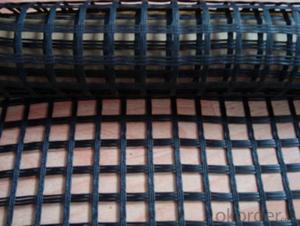When constructing reliable and strong geotechnical projects, the term &8220;geomembrane specifications&8221; becomes a crucial topic. Geomembrane is such a versatile polymer material that it can be used in numerous civil engineering works. From waste containment to flood control, the success of any project may rest on the specifications of this manmade fabric.
Welcome to our world of geomembranes, where we shall now explore the quality and performance characteristics that define them in detail.
Understanding the Basics
A geomembrane is simply a thin flexible layer that acts as an insulator or protective covering in geotechnical works. It is designed to resist many external influences including ultraviolet (UV) radiation, temperature swings, and chemical attacks. The blueprint for a geomembrane is its specification that states what properties, dimensions and performance criteria are there for this material.
Material Composition
The composition of materials constitutes the lifeblood of any geomembrane. The most prevalent ones are high-density polyethylene (HDPE), polyvinyl chloride (PVC), and ethylene propylene diene monomer (EPDM), due to their tensile strength as well as resistance to chemicals. For each type of these components, different specifications exist targeting various construction needs.
Thickness and Strength
One of themain requirements placed on geomaterials is thickness which has direct impact on its strength and durability as well. Thicker membranes feature higher puncture resistance though they may cost more too. This aspect must therefore be considered with critical caution during decision making process.
Physical Properties
It also needs physical properties like tensile strength; elongation at break; flexibility at low temperatures etc., all of which will ensure that it remains intact even when subjected to mechanical stresses throughout its service life.
Chemical Resistance
The specification for a geomembrane should also point out how resistant it is against chemicals used in producing it. This aspect is particularly important in projects dealing with hazardous waste or chemical storage as it shows how well geomembranes can withstand degradation after being exposed to chemicals.
Permeability
The permeability of geomembrane materials is so low that they cannot allow both liquids and gases to pass through them. The issue regarding the permeability coefficient should be mentioned in specifications for the material to meet the needs of a given project.
UV and Temperature Resistance
Geomembrane specifications should also cover its resistance to UV radiation and temperature extremes. This is particularly important in areas with extreme climate conditions or where there is direct exposure to sunlight.
Joining Methods
Also, the manner in which these geotechnical materials are joined together forms an essential part of their specifications. There are several ways of achieving this such as welding, seaming, adhesive bonding among others which come with diverse requirements as well as best practices to ensure water-tight seals only.
Testing and Certification
A geomembrane has to undergo strict tests for conformity with international standards before it is used on any project. Thus, the material must pass different types of tests verifying compliance with specified properties under consideration as well as reliability when applied practically.
Environmental Considerations
Today’s world is environmentally concerned about ecological impact resulting from geomembrane materials and their disposal. In addition, product details need to address questions like recyclability of this material by-product and whether manufacturing company follows sustainable practices.
Customization Options
Lastly, these specifics may include options for customization ranging from incorporating carbon black to improve ultraviolet (UV) protection capabilities or adding specific additives that enhance its resistance against chemicals.
In summary, geomembrane specifications refer to the various factors that determine whether or not a given material is suitable for a particular project. The material composition, environmental concerns and other aspects play important roles in ensuring effectiveness as well as durability of the geomembranes. As we continue to engage in even more intricate and challenging geotechnical projects, it is imperative that we understand and adhere to these requirements. We should embrace complexity in geomembrane specifications and lead the path towards successful sustainable geotechnical solutions.







